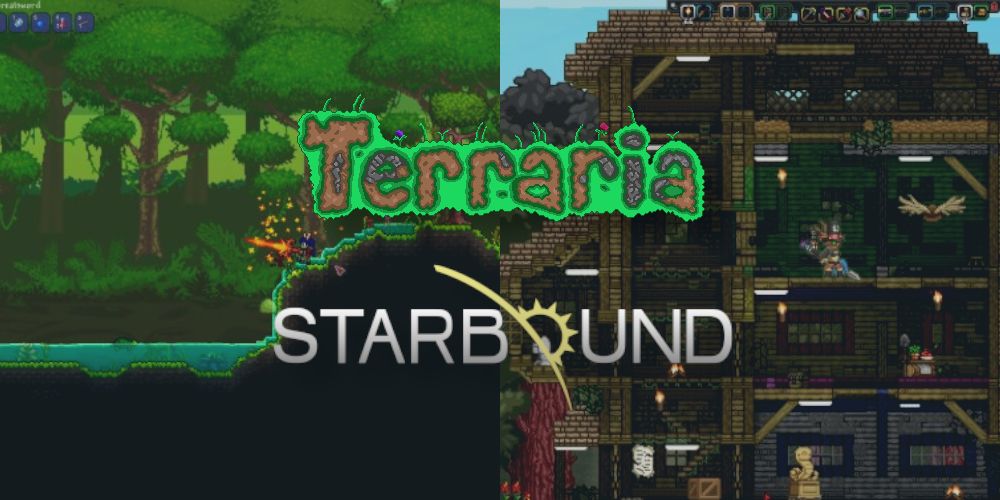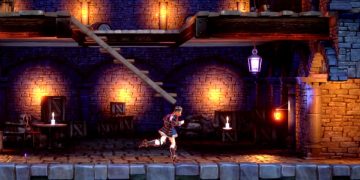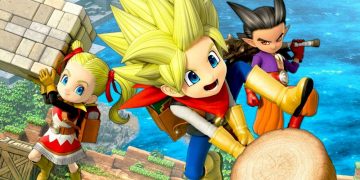From the outside, Terraria and Starbound might look identical. Both games are classified as sandbox platformers, but the core of each game is completely different.
If you're torn between the two, this guide will break down the elements of Terraria and Starbound one-by-one.
Terraria
Terraria was released for PC in 2011 by indie studio Re-Logic. It has since extended its reach far beyond the PC, and made its way to the PlayStation 4, Xbox One, the Nintendo Switch, and even mobile devices.
This wildly popular action-adventure sandbox game still hasn't lost any steam since its release date. While the final major update, Journey's End, was recently released, that doesn't put a stop to the game's seemingly endless adventures.
Story and Gameplay
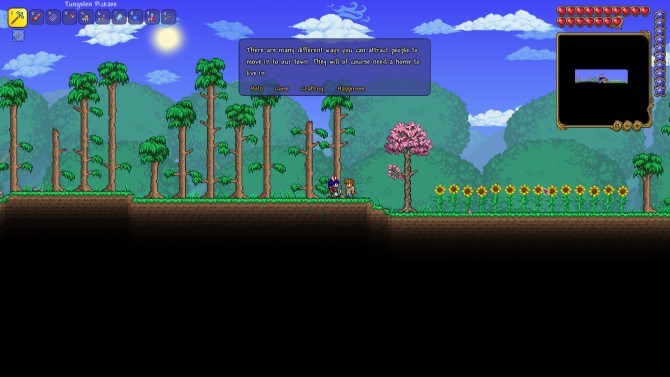
Terraria really doesn't have much of a story. When you first start playing the game, you're tasked with building a home for an NPC. After a quick breakdown of the basics, you're left to explore, mine, and build on your own.
The procedurally-generated world is filled with several different biomes, some of which include Jungle, Ocean, Snow, Desert, and Mushroom biomes.
You'll also notice that your world has either a Corruption or Crimson biome—these evil biomes slowly spread as you play the game, taking over the biomes that surround it.
The only way to progress is to summon bosses and defeat them. Killing bosses or getting certain items can get more NPC merchants to move to your village.
If you're looking for more of a challenge, defeat the Wall of Flesh, and you'll get propelled into Hardmode.
Character Creation
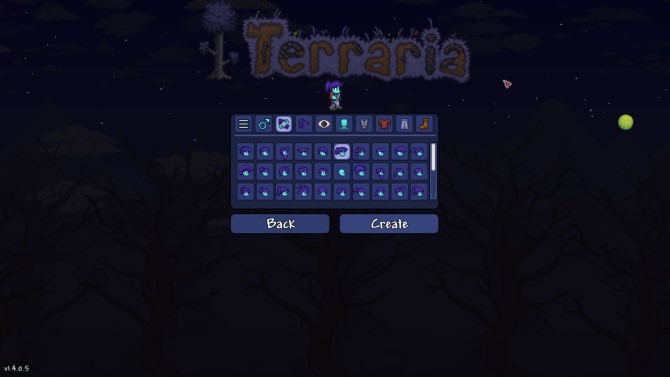
Character creation in Terraria is pretty basic. You get to pick out your character's hairstyle and outfit, as well as change the color of your character's clothes, skin, eyes, and hair.
Combat
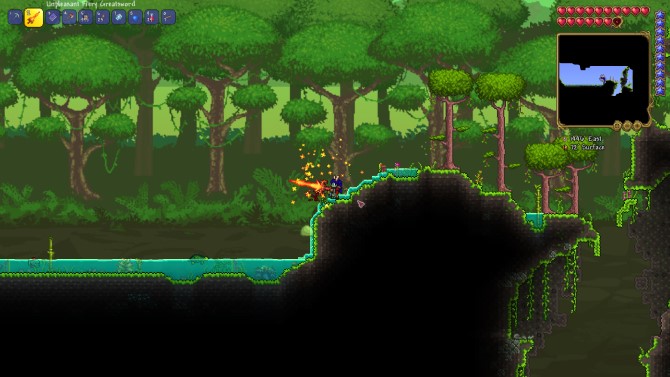
Although you start Terraria with a simple sword, you can get better and more diverse weapons by crafting them, looting chests, or getting them from boss fights.
Weapons range from swords, boomerangs, yoyos, flails, bows, wands, whips, and guns.
Terraria has a smooth, fluid combat system that Starbound lacks. More specifically, Terraria has the upper hand when it comes to melee weapons.
While swords swing almost 360-degrees around and above you, poles can poke enemies in all directions, and flails stretch out to hit opponents. This flexibility is important when you have to fight against flying enemies and large bosses.
Speaking of bosses, one unique part about Terraria is that there are no set stages for fighting them. Some bosses aren't in the most convenient locations, so you'll have to prepare for the fight by building your own platforms.
Mining
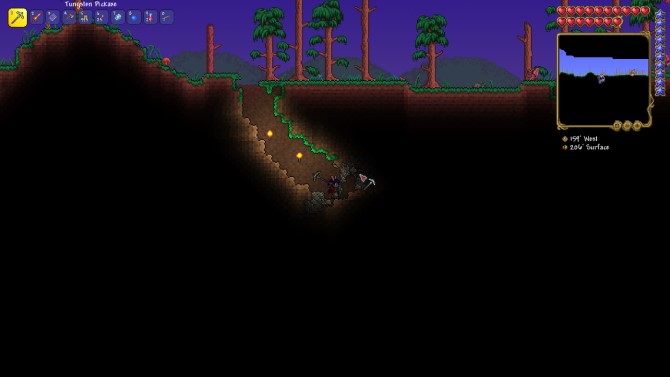
The pickaxe is your go-to tool for mining in Terraria. The mining process is rather slow at first, but once you find the right materials, you can use them to craft a pickaxe that can mine faster and break harder rocks.
Crafting and Building
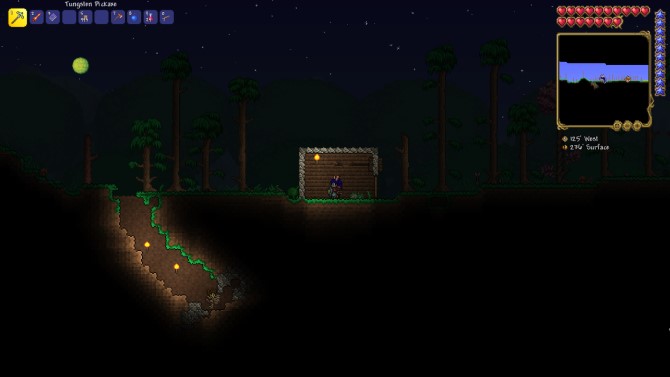
Terraria has a variety of crafting tables that you can use to craft bars of ore, building materials, furniture, armor, tools, weapons, food, accessories, potions, and dyes.
There's a huge amount of craftable items in each of these categories, so you'll always have something new to make.
Building in Terraria is done block-by-block. You simply select the material you want to use, and click the left mouse button to start constructing.
Since you can't place regular blocks in the background behind your character, you have to craft walls separately to fill in that gap.
Exploration and Survival
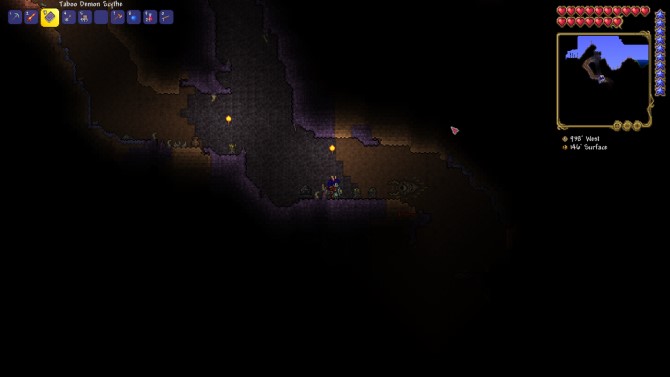
In Terraria, you're limited to exploring the world that you started on. While you can take your character and start a game on a new map, you'll just land on another variation of the same world.
Your survival depends on the strength of your armor and weapons. There are dozens of different enemies out for your blood, and you have to be prepared to protect yourself and your base from random events like the Blood Moon and Goblin Army attacks.
While you only start out with five health hearts when you create a new character, your health regenerates over time.
Starbound
Starbound is an indie action-adventure game developed by Chucklefish. After entering early access on Steam in 2013, the game was officially released in 2016.
Chucklefish hasn't made many major updates to the game since its release, but the Starbound community has kept the game alive.
Mods on the Steam workshop (like Frackin' Universe) add even more content to the game that the developers didn't originally.
Note: Because I have the Frackin' Universe mod installed on my Starbound game, some of the in-game pictures below might have some extra features not included in the vanilla Starbound.
Story and Gameplay
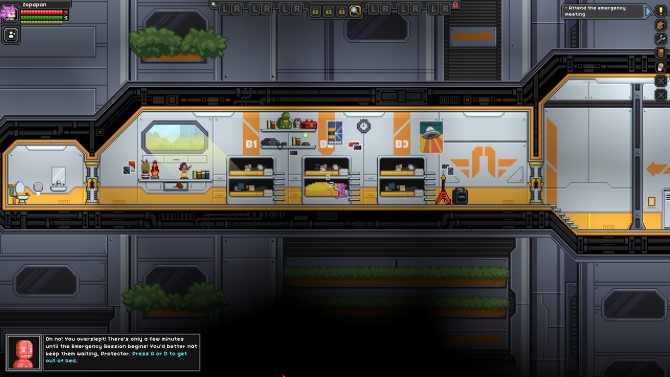
Unlike Terraria, Starbound has a solid storyline—the story is a bit superficial, but it's still a story.
At the start of the game, your character is just about to graduate from the peacekeeping Protectorate program on Earth, but an evil entity suddenly destroys the planet.
You escape in a spacecraft only to get lost in the vast universe with a broken ship.
Before you can freely explore space, you have to complete the required quests to fix your ship.
This means beaming down to the planet you stumbled upon, and finding the pieces to repair your ship. While wandering the planet, you also learn that you have a greater purpose—you must collect six keys to seal away the power that destroyed Earth.
Once your repair your ship, you can opt to complete the quests that go along with the main storyline, or you can explore different galaxies, build colonies, customize your ship, and complete side quests for NPCs.
Character Creation

Starbound's character creation is a bit more in-depth than Terraria's. You can choose to play as a member of one of six alien races, or you can play as a human. Starbound also gives you the option to change your character's hairstyle, hair color, skin color, and clothing color.
Combat
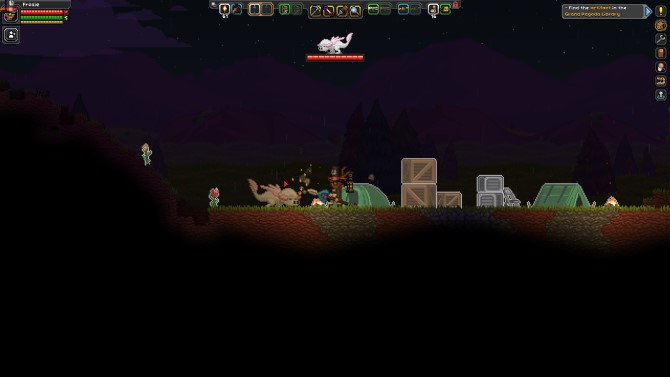
Starbound's combat system is a bit hard to get used to. You'll start the game with a weak, broken sword that'll basically make you want to quit the game.
You can't swing swords in Starbound the same way you do in Terraria. The awkward, stiff sword movement makes it difficult to hit enemies, which is a huge turnoff at the start of the game. But there are plenty of other weapons in the game besides swords.
Hammers and axes are powerful, but take a while to charge up. Spears are probably one of the most ideal melee weapons, as they're long, maneuverable, and can quickly jab enemies.
If you're not a fan of melee weapons, Starbound also has a selection of bows and guns. Like Terraria, you can find weapons by looting chests or crafting them.
In Starbound, you can wield one or two-handed weapons. The one-handed weapons leave room for you to double up on another ranged or melee weapon, which can double your damage output.
Mining
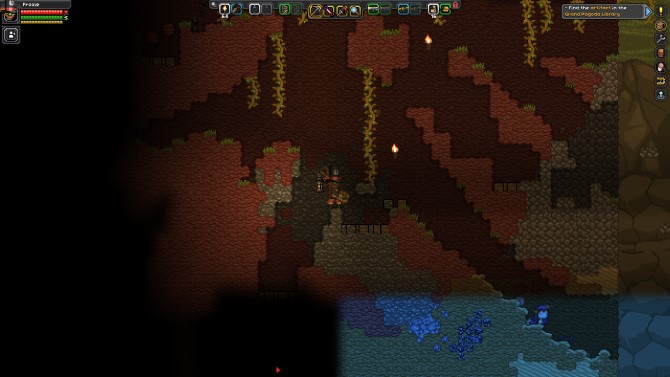
Even though Starbound gives you the option of using a pickaxe or drill, the Matter Manipulator is still the most effective mining tool. You receive the Matter Manipulator at the beginning of the game, and it gives you the ability to "suck up" materials.
You'll mine slowly at first, but you'll collect modules as you play, which allows you to upgrade the tool's range and mining speed.
Crafting and Building
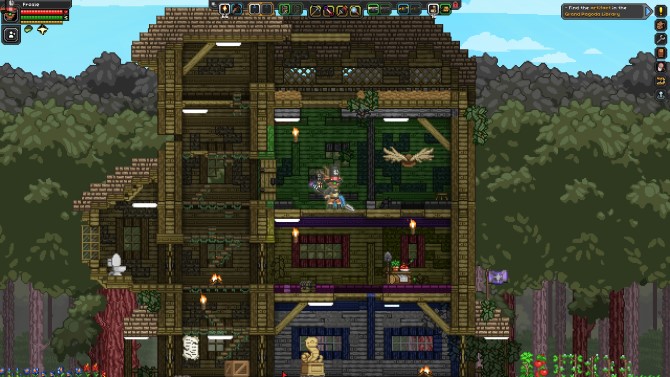
As you build different crafting tables, you'll unlock the ability to craft more objects.
Armor, weapons, potions, blocks, food, tools, and furniture are the main items that you'll have to craft throughout your game.
Starbound's building process is a bit unconventional. By default, every block you place is a 4x4 block.
To place one single block, you have to hold down Shift. You can also make any normal block into a background block by selecting the material, and right-clicking.
Exploration and Survival
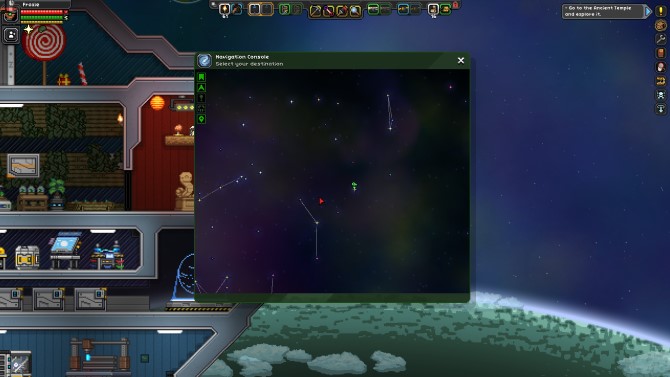
Starbound lets you travel to an endless amount of procedurally-generated planets with different biomes and difficulty levels. You get the freedom to explore Ocean, Desert, Forest, Mutated, Arctic, Midnight, Jungle planets, and more.
But before you can start zipping around the universe, you'll need to collect the fuel you need to travel.
Starbound has a heavy focus on survival. In addition to protecting yourself from enemies, you also have to shield yourself from environmental elements. Not to mention that you have to gather food in order to avoid starving to death.
Terraria vs. Starbound: The Verdict
Starbound and Terraria are two very different games that share some of the same mechanics. It's worth trying out both games to figure out which style of gameplay you prefer.
